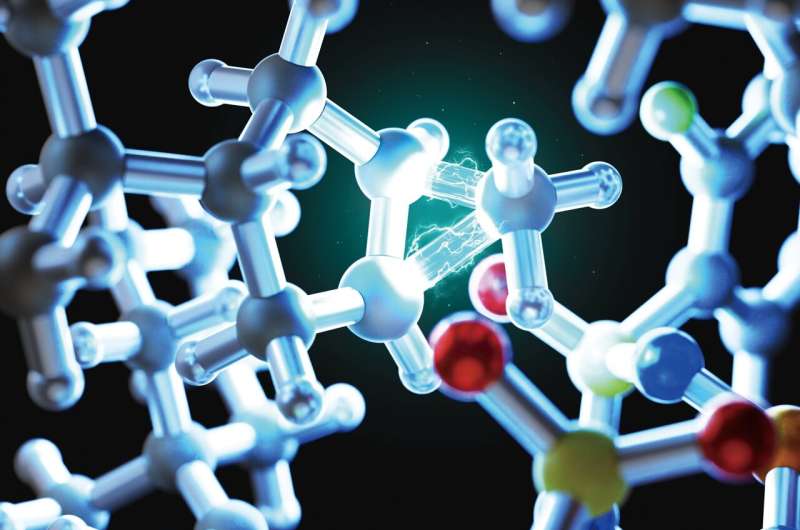Researchers at Hokkaido University have made a significant breakthrough in organic chemistry by developing a novel method to activate alkanes, a crucial component in the chemical industry. This new technique, published in Science, offers a more efficient way to convert these building blocks into valuable compounds, paving the way for advancements in the production of medicines and cutting-edge materials.

Harnessing the Potential of Cyclopropanes
Alkanes, a primary component of fossil fuels, are vital building blocks in the production of various chemicals and materials, such as plastics, solvents, and lubricants. However, their strong carbon-carbon bonds make them quite stable and inert, presenting a challenge for chemists trying to convert them into useful compounds.
To address this issue, scientists have focused on cyclopropanes, a specific type of alkane with a ring structure that makes them more reactive than other alkanes. Many of the existing techniques for breaking down long-chain alkanes, known as cracking, tend to generate a mixture of molecules, making it challenging to isolate the desired products. This challenge arises from the reaction intermediate, a carbonium ion, which has a carbon atom bonded to five groups instead of the three typically described for a carbocation in chemistry textbooks. This makes it extremely reactive and difficult to control its selectivity.
Innovative Catalytic Approach: Imidodiphosphorimidate (IDPi)
The research team discovered that a particular class of confined chiral Brønsted acids, called imidodiphosphorimidate (IDPi), could address this problem. IDPi are very strong acids that can donate protons to activate cyclopropane and facilitate their selective fragmentation within their microenvironments. The ability to donate protons within such a confined active site allows for greater control over the reaction mechanism, improving efficiency and selectivity in producing valuable products.
“By utilizing a specific class of these acids, we established a controlled environment that allows cyclopropanes to break apart into alkenes while ensuring precise arrangements of atoms in the resulting molecules,” says Professor Benjamin List, who led the study together with Associate Professor Nobuya Tsuji of the Institute for Chemical Reaction Design and Discovery at Hokkaido University, and is affiliated with both the Max-Planck-Institut für Kohlenforschung and Hokkaido University. “This precision, known as stereoselectivity, is crucial in industries like pharmaceuticals, where the specific form of a molecule can significantly influence its function.”
Transforming Chemical Reactions: Optimizing the Catalyst
The success of this method stems from the catalyst’s ability to stabilize unique transient structures formed during the reaction, guiding the process toward the desired products while minimizing unwanted byproducts. To optimize their approach, the researchers systematically refined the structure of their catalyst, which improved the results.
“The modifications we made to certain parts of the catalyst enabled us to produce higher amounts of the desired products and specific forms of the molecule,” explains Associate Professor Nobuya Tsuji, the other corresponding author of this study. “By using advanced computational simulations, we were able to visualize how the acid interacts with the cyclopropane, effectively steering the reaction toward the desired outcome.”
The researchers also tested their method on a variety of compounds, demonstrating its effectiveness in converting not only a specific type of cyclopropane but also more complex molecules into valuable products. This innovative approach enhances the efficiency of chemical reactions as well as opens new avenues for creating valuable chemicals from common hydrocarbon sources.
